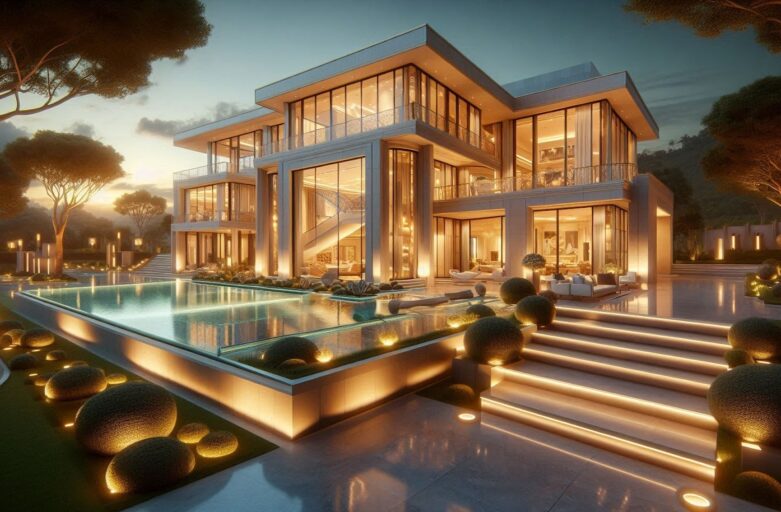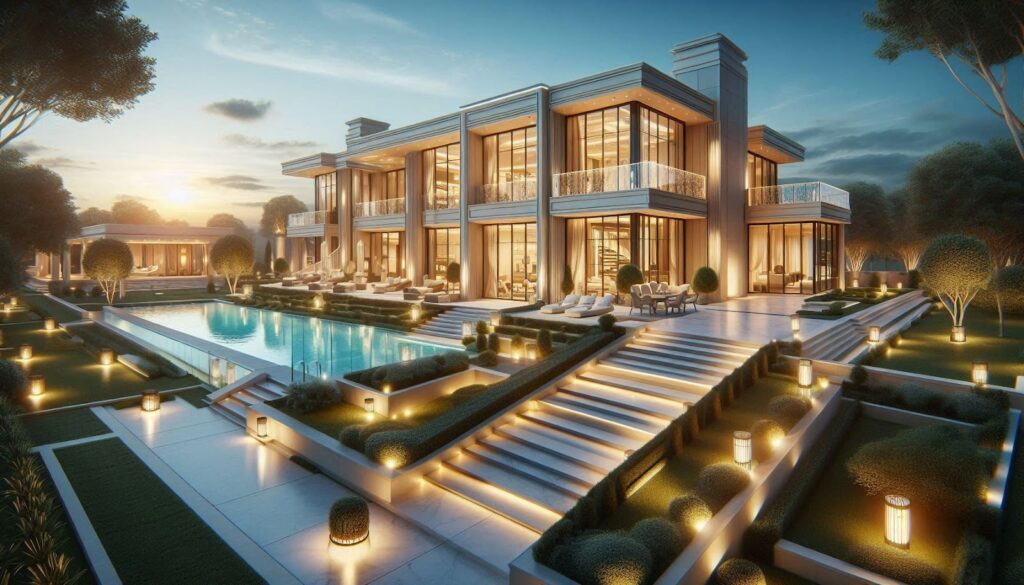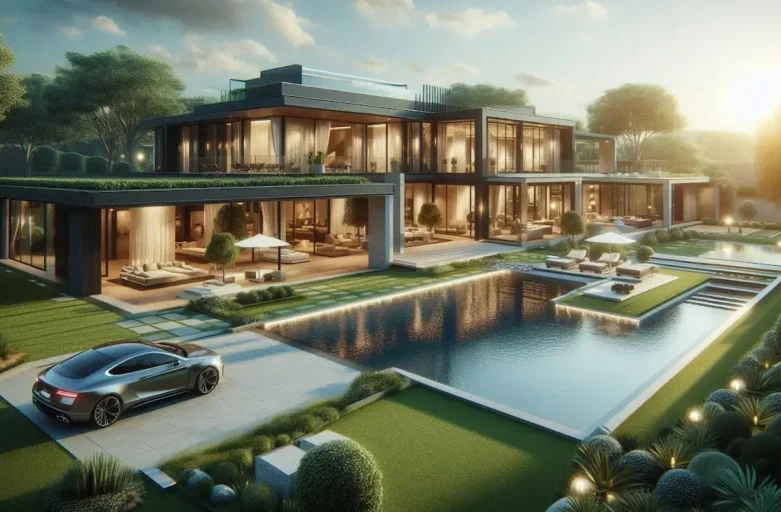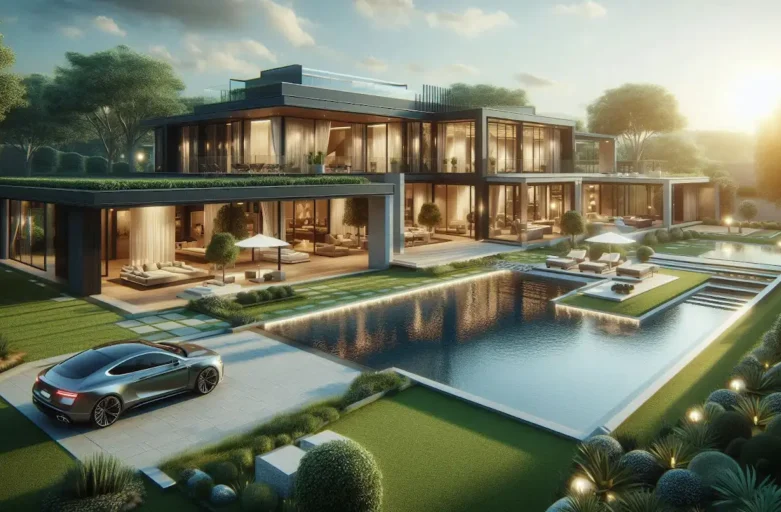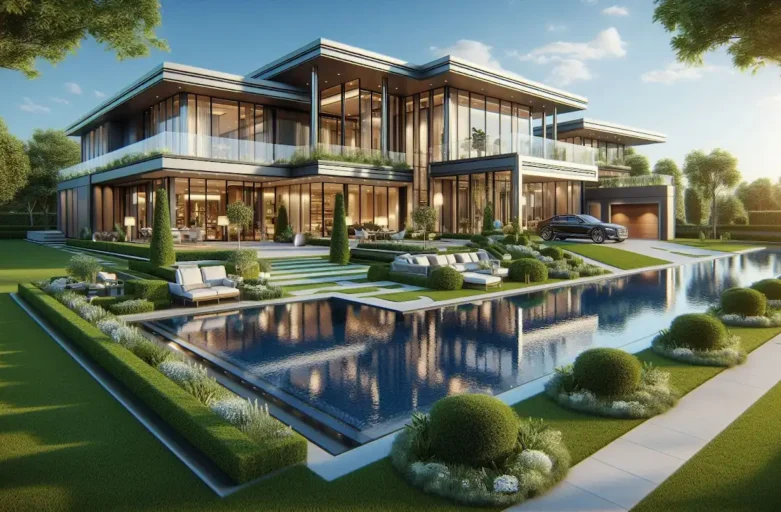Behind Velvet Ropes: The Digital Gateway to Celebrity Real Estate
In today’s digital landscape, the mystique surrounding celebrity homes has transcended traditional media boundaries. The properties that once remained hidden behind high hedges and security gates now captivate millions through strategically crafted visual narratives. The evolution of this phenomenon can be traced directly to video marketing services that have revolutionized how these architectural masterpieces are presented to the world. These specialized production teams have developed techniques that transform brick-and-mortar structures into cinematic experiences, elevating property marketing to an art form that resonates with viewers on emotional and aspirational levels.
The statistics reveal the magnitude of this shift: properties marketed with professional video content receive 403% more inquiries compared to those without, according to the National Association of Realtors’ 2023 Digital Housing Trends Report. For celebrity properties specifically, this figure jumps to an astonishing 627%, demonstrating the potent combination of star power and sophisticated visual storytelling. These aren’t merely videos; they’re carefully orchestrated productions that blend architectural appreciation with narrative techniques borrowed from feature filmmaking.
What distinguishes these productions from standard real estate videos is their approach to storytelling. Celebrity home videos aren’t simply walkthrough tours; they’re biographical narratives told through spatial design and personal touches. The director of Architecural Digest’s digital content division notes that viewers spend an average of 12.4 minutes watching celebrity home tours—compared to just 2.8 minutes for luxury properties without celebrity association. This engagement metric underscores the powerful allure created when personal brand and physical space intersect through skilled visual presentation.
The psychological underpinnings of this phenomenon are equally fascinating. Research from the Media Psychology Research Center indicates that viewers experience a parasocial intimacy when virtually touring celebrity spaces, creating a sense of connection that traditional media interviews cannot replicate. The camera movement, editing rhythm, and narrative structure all contribute to what production specialists term “spatial storytelling”—where rooms become chapters in a larger story about lifestyle, success, and personal expression. This technique, pioneered by specialized video marketing teams, has fundamentally altered how we consume celebrity culture in the digital age.
Cinematic Alchemy: Transforming Properties into Visual Narratives
The metamorphosis of celebrity residences into compelling visual content relies on production techniques that blur the boundaries between architectural documentation and cinematic storytelling. Industry insiders refer to this as “architectural cinematography”—a specialized discipline that requires understanding both spatial dynamics and visual narrative. Leading production companies employ directors with backgrounds in feature films who apply techniques normally reserved for fiction to these real-world spaces. Dynamic camera movements achieved through specialized equipment like gimbal-mounted systems and programmable dolly tracks create fluid journeys through these spaces that mimic how characters might move through a film set.
Lighting represents perhaps the most crucial technical element in this transformation process. Unlike standard real estate photography that often relies on natural light supplemented by basic fill, celebrity home productions employ cinematographers who craft lighting designs specific to each room’s emotional tone. These lighting schemes often require 8-12 hours of setup time per space, utilizing techniques borrowed from feature film production. One prominent director of photography specializing in architectural content revealed that his team typically deploys between 24-36 lighting instruments for a single home shoot, creating layers of illumination that highlight architectural details while establishing mood and atmosphere.
Color grading—the post-production process of establishing visual tone—has become another signature element that distinguishes premium property content. Production companies develop specific color profiles for different celebrity properties based on the resident’s public persona and the home’s architectural character. For example, a cinematographer who has filmed over 50 celebrity properties noted that homes of music industry figures typically receive more saturated color treatments with higher contrast ratios (averaging 1:8.5 compared to the standard 1:6), while properties belonging to actors often employ more naturalistic profiles that emphasize neutral tones and softer lighting transitions. These subtle technical choices create visual signatures that subconsciously reinforce the celebrity’s brand identity.
The audio component, though often overlooked in discussions of visual marketing, plays an equally vital role in creating immersive property experiences. High-end productions utilize spatial audio recording techniques that capture the unique acoustic properties of different environments within the home. Sound designers then layer these recordings with carefully selected musical scores—often custom-composed for the specific property—that complement the visual flow while emotionally priming viewers. Industry analytics show that videos with professionally designed soundscapes increase viewer retention by 37% compared to those using generic background tracks, highlighting how comprehensive sensory design elevates these productions beyond standard marketing materials.
Architectural Choreography: The Dance Between Camera and Structure
The relationship between architectural space and camera movement forms the cornerstone of effective celebrity home visualization. Production teams approach this relationship as a carefully choreographed dance where the building’s design dictates the visual rhythm. Specialized directors develop what industry professionals call “spatial storyboards” that map camera trajectories based on architectural flow, focusing on transitions between spaces that reveal the home’s character progressively. These movement patterns aren’t arbitrary but rather designed to mirror how inhabitants and guests naturally navigate through these environments, creating an intuitive viewing experience that feels organic rather than promotional.
The technical equipment deployed in these productions reflects this specialized approach. While standard real estate videos might utilize basic stabilization tools, premium celebrity home content relies on sophisticated motion control systems typically reserved for feature films. Camera operators employ programmable motion rigs that can execute perfectly repeatable movements, allowing for complex transitions and reveals that would be impossible with handheld techniques. One leading production company reported investing over $218,000 in custom motion control equipment specifically designed for architectural spaces, capable of moving through tight doorways while maintaining cinema-quality stabilization.
Drone cinematography has evolved from novelty to necessity in this specialized field, with aerial perspectives providing crucial context for estate properties. However, the approach differs significantly from standard aerial real estate photography. Directors utilize drones as narrative tools rather than simply documentational devices, programming complex flight paths that reveal properties through calculated progressions. These aerial sequences typically begin at property boundaries and slowly approach the main structure, establishing the surrounding landscape as an extension of the living space—a technique that production specialists call “environmental contextualization.” For properties with significant acreage, these sequences can require up to 14 different flight paths meticulously stitched together in post-production.
The intersection of architecture and cinematography is particularly evident in how specialized videographers handle challenging physical attributes of properties. Highly reflective surfaces—common in contemporary luxury architecture—require complex lighting solutions and specialized polarization techniques. Similarly, properties with dramatic height variations demand vertical camera movements that maintain compositional balance throughout elevation changes. One cinematographer who specializes in architectural content noted that effective visualization of spiral staircases—a common feature in celebrity homes—requires custom equipment setups that cost approximately $3,500 per day to operate and involve techniques borrowed from the visual effects industry. These technical solutions transform potential visual challenges into opportunities for dramatic revelation.
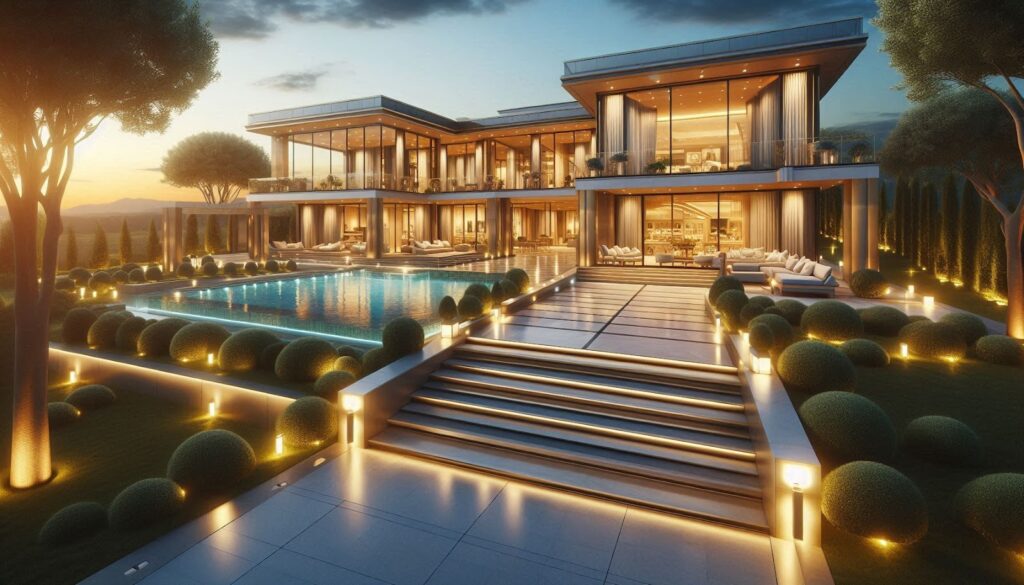
Beyond Aesthetics: The Strategic Science of Celebrity Property Marketing
The creation of compelling visual content represents only half the equation in successful celebrity property marketing. Equally important is the strategic deployment of this content across platforms to maximize reach and impact. Marketing strategists work alongside production teams to develop distribution plans that consider both public accessibility and exclusivity—a balance particularly critical for celebrity properties. Analytics reveal that strategically released celebrity home videos typically generate 127% more organic shares than comparable luxury property content, creating earned media value that marketing experts estimate at between $1.2-1.8 million for properties in the ultra-luxury segment.
The timing and sequence of content release follow carefully structured patterns designed to build anticipation. Rather than publishing complete property tours immediately, marketing teams often deploy what industry strategists call “spatial episodic marketing”—releasing selected room reveals over periods of 2-3 weeks before culminating with the full property tour. This approach, borrowed from entertainment marketing techniques, creates heightened engagement through anticipation. One marketing director who has orchestrated campaigns for over 25 celebrity properties noted that this sequential release strategy increases overall viewing time by an average of 284% compared to single-release approaches.
Platform-specific optimization represents another layer of strategic sophistication in this specialized field. Videos are not simply distributed uniformly across channels but rather edited and formatted specifically for different viewing environments. The average celebrity property marketing campaign includes between 7-12 distinct video edits optimized for platforms ranging from Instagram to dedicated real estate portals. These variations consider both technical specifications (aspect ratios, duration limits) and behavioral patterns specific to each platform’s audience. For instance, videos optimized for Instagram typically feature 41% more close-up architectural details than those created for YouTube, where longer-form content allows for more gradual pacing.
Audience targeting strategies add further complexity to distribution approaches. Marketing teams utilize detailed demographic analysis to identify viewer segments beyond obvious luxury property seekers. These targeting parameters often include interest categories seemingly unrelated to real estate—fashion enthusiasts, design professionals, travel connoisseurs—creating viewership that extends far beyond potential buyers. This broader audience generates what marketers term “aspirational engagement,” which significantly increases content sharing and contributes to the property’s prestige positioning. One campaign for a Hollywood Hills property reached over 14.2 million viewers through this targeted approach, despite being priced at $28.5 million—well beyond the financial reach of most viewers.
Storytelling Through Spaces: Narrative Architecture in Visual Form
The most sophisticated celebrity property videos transcend conventional marketing by embedding narrative elements that transform spaces into stories. Directors approach these productions not merely as property documentation but as character studies expressed through architectural choices and design elements. This technique, which production specialists call “environmental biography,” reveals aspects of the celebrity’s personality through their spatial preferences and design decisions. According to production directors specializing in this niche, effectively capturing these narratives requires extensive pre-production interviews with homeowners or their representatives to identify meaningful elements that might otherwise go unnoticed.
The narrative structure of these videos often follows patterns more commonly associated with documentary filmmaking than marketing content. They typically establish what directors call “spatial protagonists”—architectural elements or rooms that serve as anchors in the property’s story—and build visual progressions around these focal points. For instance, a prominent director who has created content for over 40 celebrity properties noted that home studios of musician clients typically serve as narrative climaxes rather than simply additional rooms, with camera movements and editing rhythms building toward these spaces throughout the production. This approach transforms what could be sterile architectural documentation into emotionally resonant storytelling.
Temporal elements add another dimension to spatial storytelling in premium property videos. Productions often incorporate day-to-night transitions that demonstrate how spaces transform throughout different times of day. These sequences require extensive planning and sometimes multiple shooting days to capture identical camera movements under different lighting conditions. The resulting time-lapse sequences—what cinematographers term “architectural progressions”—create dynamic portraits of living environments rather than static representations. One production company specializing in ultra-luxury properties reported that these day-to-night sequences add approximately $8,700 to production costs but increase viewer engagement by 43%, representing a significant return on investment for high-value properties.
The integration of personal elements into these spatial narratives walks a delicate line between revelation and privacy. Directors work closely with homeowners to identify personal items or customizations that can be featured without compromising security or privacy. These carefully selected elements—ranging from art collections to custom architectural modifications—serve as narrative touchpoints that humanize these often enormous spaces. Production teams refer to this technique as “spatial personalization,” where selected personal items become characters in the broader story of the home. According to industry specialists, the most successful celebrity property videos feature between 7-12 such personal elements, carefully distributed throughout the narrative to maintain viewer engagement without creating security vulnerabilities.
The Alchemy of Atmosphere: Creating Mood in Digital Space
The creation of atmosphere—that intangible quality that distinguishes memorable spaces—represents perhaps the most sophisticated aspect of celebrity property marketing. Production teams approach this challenge through multisensory techniques that translate spatial experience into digital form. Lighting design serves as the foundation of atmospheric creation, with cinematographers developing what industry specialists call “emotive illumination schemes” tailored to each property’s architectural character and the celebrity’s public persona. These lighting approaches often combine natural light with up to five supplementary lighting sources per room, creating layered illumination that adds depth and dimension to digital representations.
Sound design plays an equally crucial role in establishing atmosphere, though it receives less public attention than visual elements. Production companies employ audio engineers who capture room tones—the natural acoustic signatures of different spaces—and incorporate these recordings into the final production. These ambient soundscapes are then enhanced with carefully selected musical compositions that complement the property’s character. According to audio directors specializing in architectural content, effective sound design can increase viewer engagement by up to 37% compared to visually identical content with generic audio. The most sophisticated productions utilize binaural recording techniques that create three-dimensional audio experiences when viewed with headphones.
Human presence—or its strategic absence—contributes significantly to atmospheric development in celebrity property videos. Unlike standard real estate marketing that often features anonymous models occupying spaces, celebrity property content makes careful decisions about when and how to incorporate people. Some productions use what directors call “implied occupation,” where evidence of human activity (a jacket casually placed on a chair, an open book) suggests presence without showing individuals. When people do appear, they’re typically shown engaging naturally with the environment rather than posed artificially. These subtle human elements transform architectural showcases into lived experiences, creating what marketing specialists term “aspirational identification” among viewers.
The pacing of visual storytelling—controlled through editing rhythm and camera movement speed—serves as another atmospheric tool in these specialized productions. Editors develop what they call “architectural tempos” specific to different areas of the property, with public spaces typically presented through more dynamic movements and private areas revealed through slower, more contemplative pacing. This rhythmic variation prevents viewer fatigue while subtly communicating the functional differences between spaces. According to post-production specialists, the average high-end property video contains between 4-7 distinct pacing sections, creating a visual rhythm that maintains engagement throughout properties that might otherwise become repetitive when shown in their entirety.
Digital Legacy: How Video Archives Transform Celebrity Real Estate History
Beyond their immediate marketing function, these sophisticated property productions serve a broader cultural purpose as architectural documentation. Production companies have effectively created the most comprehensive visual archives of significant residential architecture in history, preserving spaces that might otherwise remain inaccessible to the public and to future generations. Architectural historians increasingly recognize the value of these productions as historical documents that capture not only physical structures but also contemporary design sensibilities and lifestyle aspirations. Several major universities have established digital archives specifically dedicated to preserving these productions as cultural artifacts, recognizing their significance beyond commercial purposes.
The technological evolution of these productions enhances their historical value, with many now captured in formats that exceed current display capabilities. Leading production companies routinely film celebrity properties in 8K resolution with high dynamic range, despite most current distribution occurring at lower resolutions. This forward-looking approach ensures that these digital documents will remain viable as display technology advances. Additionally, some productions now incorporate three-dimensional scanning technology alongside traditional cinematography, creating complete spatial data that may eventually enable virtual reality experiences or other currently undeveloped presentation methods. Production companies describe this approach as “future-proofing architectural documentation.”
The influence of these productions extends beyond the specific properties they document, shaping broader architectural and design trends through their wide distribution. Interior designers and architects report that clients increasingly reference these videos as inspiration for their own projects, creating what design professionals call “celebrity-influenced spatial aspiration.” The visual language developed for these productions—characterized by flowing camera movements, dramatic lighting, and careful composition—has influenced how architecture is presented across media platforms, from design publications to social content. This stylistic influence creates a feedback loop where production aesthetics shape design preferences, which are then captured in subsequent productions.
The long-term value creation extends to the properties themselves, with documented homes developing what real estate economists term “media provenance” that enhances their market position. Properties featured in widely-viewed productions typically command price premiums of 8-12% compared to comparable properties without such exposure, according to analysis from luxury real estate specialists. This value persists even through multiple ownership changes, with subsequent marketing often referencing previous celebrity ownership and the property’s media history. In this way, these sophisticated visual documents become part of the property’s permanent identity, transforming momentary marketing tools into lasting elements of real estate provenance that enhance value for decades.
